The 10 Biggest Features On Apple’s iPhone 13
Apple debuted the iPhone 13 with updates including a brighter display and smaller notch, as well as an improved camera and processor.
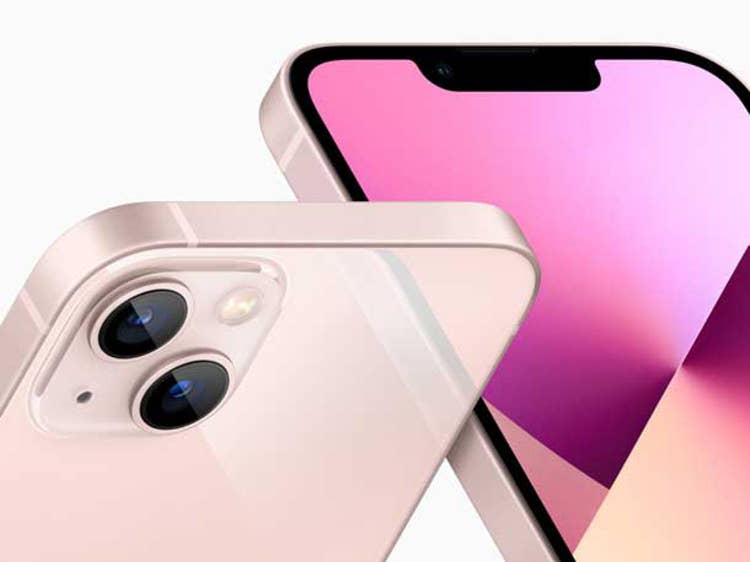
iPhone 13 Arrives
Apple on Tuesday unveiled the iPhone 13, the second generation of the iPhone series to feature 5G connectivity. The follow-up to the hugely successful iPhone 12, Apple made clear that the iPhone 13 is more of an iterative update, unlike its predecessor. Still, the iPhone 13 will offer a range of improvements, with updates including a brighter display with a smaller notch, improved cameras, double the starting storage and the new A15 Bionic processor. The iPhone 13 was announced during Apple’s September product event alongside iPhone 13 Pro models, new iPad models and the Apple Watch Series 7.
What follows are the 10 biggest features to know on Apple’s iPhone 13.
Display
The iPhone 13 will stick with the 6.1-inch display size and 460 pixels-per-inch resolution of its predecessor, as well as the vibrant “Super Retina XDR” OLED display technology. In terms of updates, the iPhone 13 will get a notable bump up in brightness—with the display able to go up to 800 nits of outdoor brightness. That’s a 28-percent improvement from the 624 nits on the iPhone 12. The other biggest change on the display is that Apple has shrunk down the size of the display notch, through a redesign of the front-facing TrueDepth camera. The iPhone 13 notch is now 20-percent smaller, offering a slight increase in usable screen space.
However, there won’t be an upgrade to smoother display motion with a 120Hz refresh rate on the iPhone 13—that’s being reserved for the iPhone 13 Pro models for now. The iPhone 13 sticks with a 60Hz display.
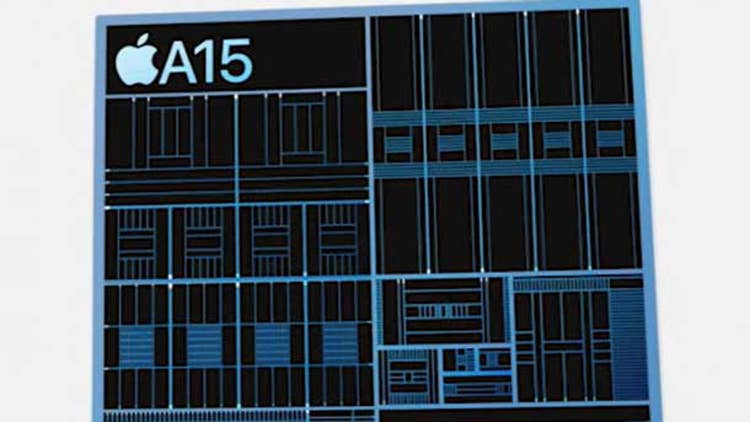
Processor
As usual, Apple has introduced a new generation of its A-series smartphone processor with the iPhone 13—with the debut of the A15 Bionic. The chip features a six-core CPU and four-core GPU. Apple did not indicate what sort of performance increase it will offer over the A14, instead contrasting the iPhone 13 performance with that of competitors (“up to 50 percent faster than the competition” for CPU and “up to 30 percent faster than the competition” for GPU).
Connectivity
Like its predecessor, the iPhone 13 will offer support for both types of 5G connectivity (sub‑6 GHz and mmWave). Apple didn’t offer any details on whether the iPhone 13 will offer improved 5G speeds over the iPhone 12 (given the expectation that the iPhone 13 would include a new Qualcomm 5G modem). Instead, the 5G update that Apple focused on the inclusion of more 5G bands in the iPhone 13—“allowing it to work in more places on 5G for greater coverage and performance,” Apple said in its news release—and on plans to increase the number of 5G carriers for iPhone to more than 200 globally by the end of the year.
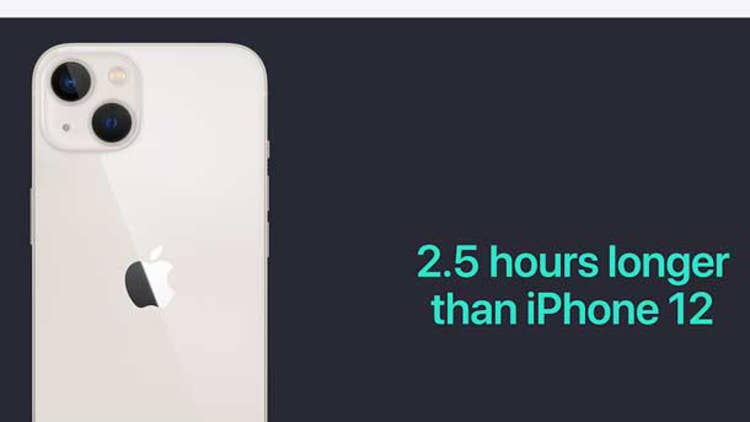
Battery Life
One of the most useful updates announced by Apple for the iPhone 13 is an increase in battery life. Apple is promising up to 19 hours of video playback for the iPhone 13, for an increase of up to 2.5 hours longer usage than on the iPhone 12. The battery life improvements come both from the greater energy efficiency of the A15 chip and from a larger battery size, Apple said.
Storage
Another notable upgrade for the iPhone 13 is the starting storage capacity of 128 GB—double the starting storage of 64 GB for the iPhone 12. Apple said the iPhone 13 will also be offered with 256 GB or 512 GB configurations.
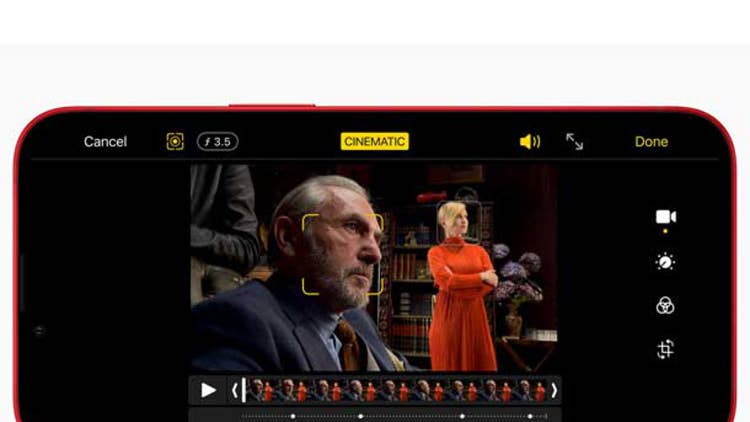
Camera
The rear dual-camera system on the iPhone 13 includes a new Wide camera featuring a larger sensor, which can bring in as much as 47 percent more light—enabling major improvements in low-light photography, Apple said. Another camera upgrade comes from the inclusion of “sensor-shift” optical image stabilization, which had previously only been available in the iPhone 12 Pro Max. The sensor-shift OIS “stabilizes the sensor instead of the lens so shots are more steady,” Apple said in its release. Meanwhile, the Ultra Wide camera also includes a new sensor that “captures images with more detail in the dark areas of photos and videos with less noise,” Apple said. The two cameras offer 12 megapixels a piece, along with 2X optical zoom and up to 5X digital zoom.
The positioning of the rear cameras has also changed on the iPhone 13, with the cameras now placed diagonally instead of horizontally as on the iPhone 12.
Video
Apple touted new video features for the iPhone 13 including Cinematic mode, which can automatically change the focus as subjects move around. For instance, the company showed the ability for Cinematic mode to “intelligently” change focus when a subject enters the view or gazes in a different direction.
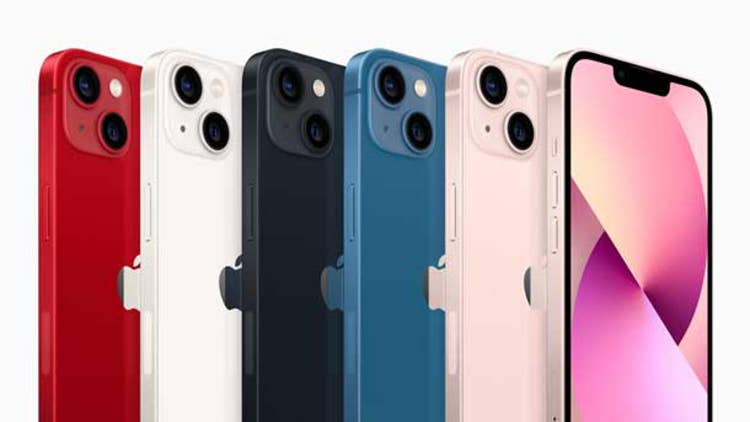
Body
The form factor on the iPhone 13 remains nearly identical to that of the iPhone 12, with the only change being a very slight increase in thickness (presumably to accommodate the larger battery size). The iPhone 13 will measure 7.65 mm, or 0.3 of an inch thick, versus 7.4 mm, or 0.29 of an inch thick on the iPhone 12. The iPhone 13 will also keep the flat-edge design that was introduced with the iPhone 12.
In terms of durability, the iPhone 13 will continue to feature highly durable ceramic shield material on the display and an IP68 water resistance rating (suggesting the device can withstand a 6-meter plunge for up to a half hour). The iPhone 13 will also be compatible once again with MagSafe accessories, which can magnetically attach to the back of the phone.
Colors
The iPhone 13 will be available in five colors—pink, blue, midnight (black), starlight (white) and red. The pink color is new, and replaces the green color that was available for the iPhone 12.
Price and Availability
The starting price for Apple’s iPhone 13 is $799. That’s identical to the starting price of the iPhone 12, even though the starting storage on the iPhone 13 has doubled to 128 GB.
Pre-orders for the iPhone 13 begin on Friday, Sept. 17, and the device will be shipping on Sept. 24.